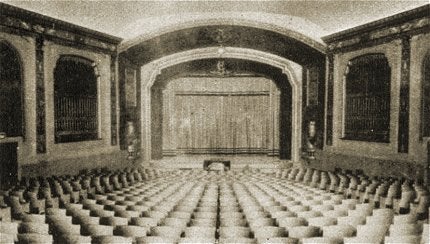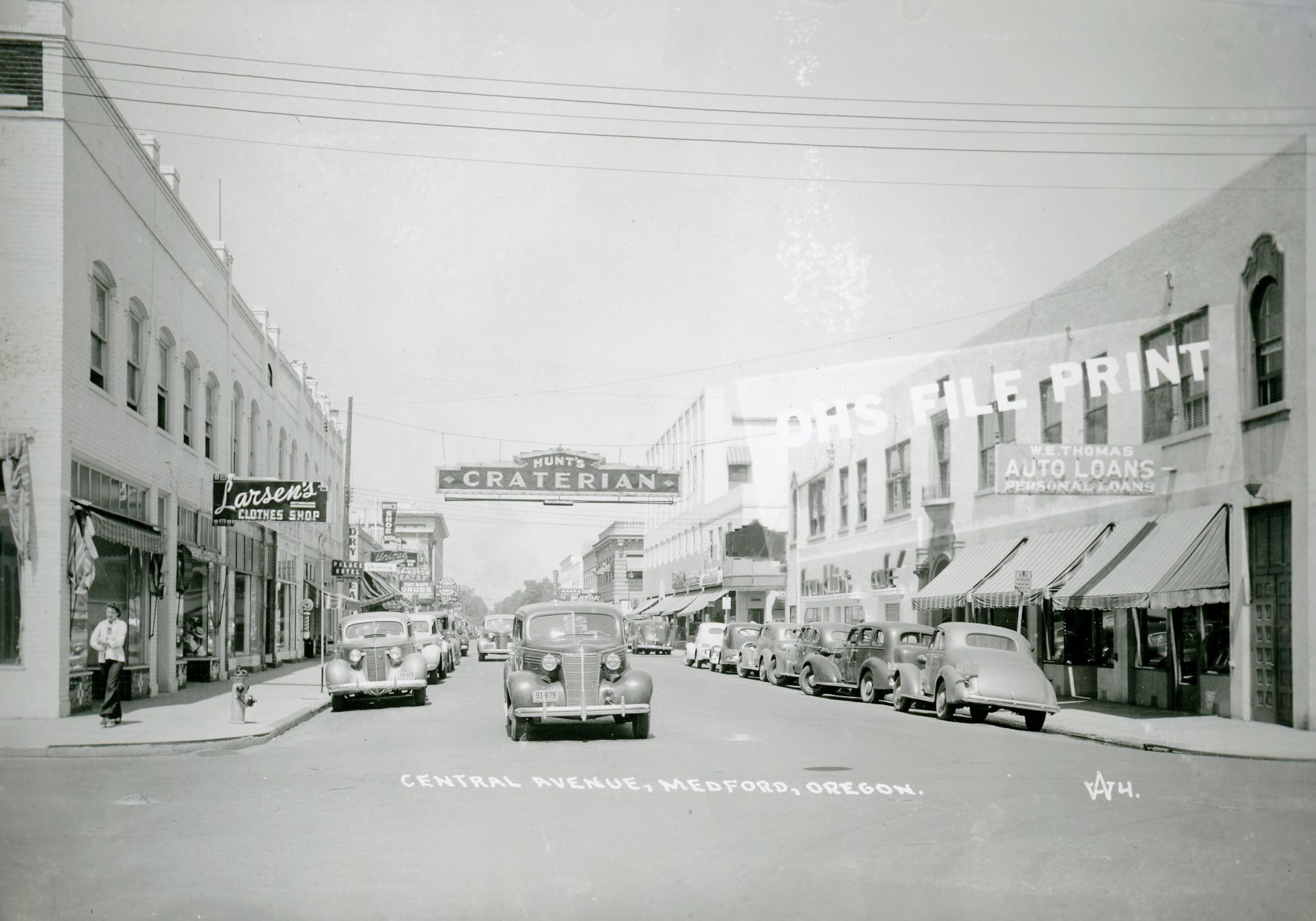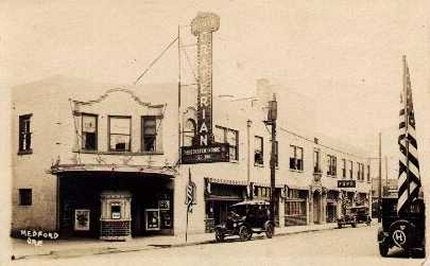Officially opened on October 20, 1924, the 737-seat Craterian theater was primarily used to host vaudeville shows and performances. When initially built, the Craterian theater used a stucco exterior to try replicating a Spanish villa with a touch of Renaissance furnishings. The Craterian theater had different sections of its theater that appealed to different target audiences. To try appealing to men who enjoyed smoking, the Craterian theater provided a smoking lounge. Meanwhile, the Craterian theatre appealed to mothers by introducing glass-enclosed rooms to watch films in. Additionally, the Craterian theatre offered rooms for private parties, dressing rooms underneath the stage, and supposedly the West Coast's "first hydraulic-lift organ elevator" (Fitzgibbon). The owner, George A. Hunt, wanted the Craterian theater to be as innovative and up-to-date as possible. Hunt spent over $20,000 to be one of the very first in the city to implement Vitaphone and Movietone projectors in 1928. Film-goers were able to get admission and watch films for as low as 15 cents.
The Craterian Theater is known as a hub for entertainment and performances. Many promotional strategies were used by the Craterian Theater to try bringing in as much publicity and press to their theater. One of the biggest reasons was because of their promoter, George A. Hunt. One of his most successful promotional campaigns was hosting a naming contest for the Craterian Theater for a $25 prize. It was a massive success as it received over 1,500 submissions. Eventually, Hunt decided to choose the name "Craterian" based on Crater Lake. Additionally, George A. Hunt made a huge effort to keep his theater as up-to-date as possible. For example, by being the first in the city to implement the Vitaphone and Movietone projects in 1928, his movie theater was seen as newer and would attract more patrons than other theaters. Additionally, other eccentric promotional strategies such as offering a $1,000 life insurance policy against anyone frightened to death during a showing helped boost publicity and drew people in. While looking at historic newspapers in Medford, Oregon, it can be seen that newspaper advertisements were not a pivotal part of the Craterian Theater's promotional strategy. There was only one newspaper advertisement to be found. However, the Craterian Theater has been featured on quite a few newspaper articles.

On Tuesdays, Wednesdays, and Thursdays, the Craterian Theatre put on vaudeville acts while Fridays, Saturdays, and Sundays were reserved for films. With the advent of the Vitaphone, and its installation in Hunt's Craterian Theatre in 1928, those films quickly became 'talkies' and the Craterian's programs shifted away from focusing on featuring the vaudeville acts into showing the feature films that audiences could 'see and hear.'

During the month of October, the George Hunt Theaters Co. celebrated the anniversary of the company's incorporation with 'specialized anniversary programs'. These programs included special events such as the ones advertised for the company's 9th anniversary: "Good Pictures, Vaudeville and Revues Will Be Offered on Anniversary Month Theater Programs" (Medford Mail Tribune, Sept. 30, 1928, p. 6). The company took out a full page spread in the Medford Mail Tribune in order to advertise the specialized anniversary programs that the Rialto and Craterian Theaters would be presenting throughout October. This event included the "Grand Opening of Weekly Fanchon and Marco's Stage Presentations" held on Sunday, October 7th, 1928 along with other 'super attractions' throughout October (Medford Mail Tribune, Sept. 30, 1924, p. 6).
The theater participated in numerous events in Medford such as the parade celebrating the Armistice Day in November of 1924. The day, celebrated for the Civil War football game between Medford High School and Ashland High School, included "special programs at the Rialto and Craterian Theaters" (Medford Mail Tribune, Nov. 10, 1924, p. 6). The Craterian's management announced that "All Soldiers in Uniform Are Invited Guests of the Craterian Theater Till 6:00 P.M." during the celebrations of Armistice Day (Medford Mail Tribune, Nov. 10, 1924, p. 2).
The Craterian theater, also known as Hunt's Craterian after owner George Hunt, spared no expense when it came to advertising its theater, often times taking up most of the newspaper page with its advertisements in a time where adding photos and designs was extremely expensive. The promotional advertisements were very stylized and never the same design twice. The advertisements often times included images depicting scenes and characters from the films being shown at the theater alongside the highest praise that the theater could offer.
Through the growth of the theater, the advertisements changed and evolved with it. For example, the logo for Hunt's Craterian evolved from simply the text into the circular bubble encapsulating "Hunt's Craterian" attached to each of its advertisements. Additionally, within the bubble and below the name of the theater, the location of the theater "Central Just Off Main" was printed in order to inform patrons where to find the theater. With the aging of the theater and changing of different hands, the theater's logo continued to change such as in "1928 Hunt sold his lease to Fox Theatres" and thus the logo for the theater again transformed and became 'Fox Craterian' (Cinema Treasures). George Hunt "bought it back in 1933 after Fox’s bankruptcy" and, thus, the Craterian returned to being called "Hunt's Craterian" (Cinema Treasures).

The Craterian ran regular ads in the Medford Mail Tribune, and on the theatre's first anniversary of operation, the newspaper ran an article boasting of the theatre's modernity. "It is indeed a real pleasure for home folks to brag to visitors of the fact that nowhere on the coast is there a more up-to-date theatre than Hunt's Craterian, and then to take them to the theatre and 'show them'." (Medford Mail Tribune, Oct. 21, 1925, p. 5).